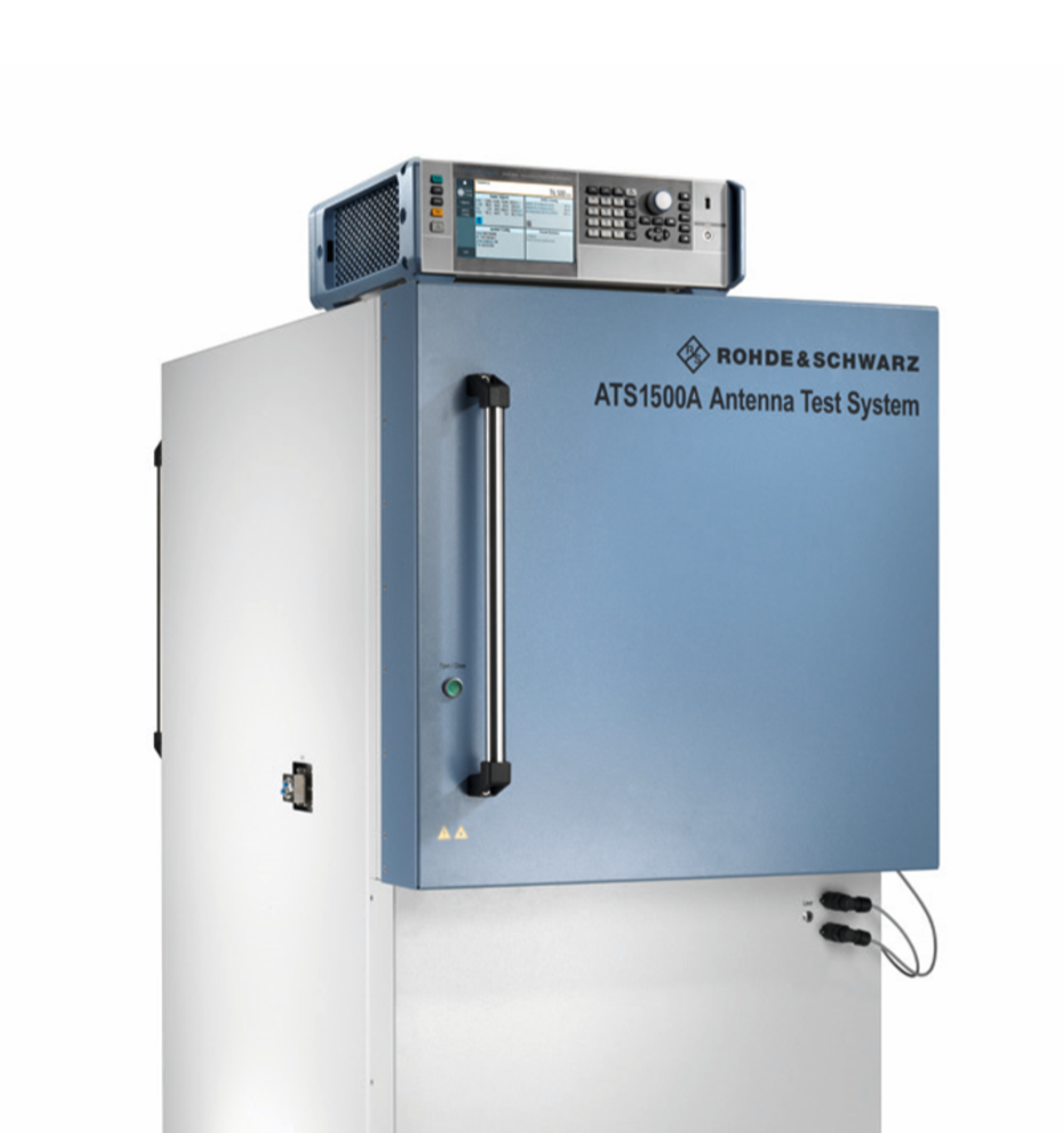Automotive radar sensors are safety-relevant and have to be comprehensively tested for reliable functioning. The R&S®AREG100A automotive radar echo generator is a versatile instrument for stimulating radars in the 24 GHz ISM band and in the 77 GHz and 79 GHz frequency bands. Together with the R&S®ATS1500A shielded chamber, it offers a compact solution in a minimum footprint – perfect for lean production environments.
Your task
Radar sensors measure range, radial velocity and size of objects by evaluating the radar echo’s delay, Doppler frequency offset and amplitude in the observation area. Determining these parameters simultaneously and in multiple object environments such as intersection scenarios poses technical challenges for the design of the radar. Testing of key radar performance parameters such as detection capability, range, Doppler and azimuth accuracy and resolution is therefore mandatory, but time-consuming and expensive.
In production tests, fast and simple end-of-line tests of the sensor’s functionality are mandatory and necessary to ensure continuous product quality control and proper radar functioning before delivery to the OEM customer. Modern, lean and versatile production lines need test systems with a small footprint, high reliability, outstanding test repeatability, customizable test configurations, simple operation and maximum throughput.
T&M solution
The R&S®AREG100A automotive radar echo generator is a tailored solution for generating radar echoes in end-ofline production testers for automotive radar sensors. The user can configure up to four static object distances with selectable radar cross section and add a fixed frequency offset to simulate object velocity. The R&S®AREG100A has RF frontends for both the 24 GHz ISM band and the Eband and offers a calibrated IF output for testing the radar sensor’s equivalent radiated isotropic power (EIRP) in line with applicable normative standards. For the E-band, two different frontends are available for covering the standard long-range frequency band from 76 GHz to 77 GHz and the frequency range from 77 GHz to 81 GHz with 4 GHz bandwidth. This makes the R&S®AREG100A an ideal solution for testing today’s and tomorrow’s radar sensors in production.
Radar echo generation
The R&S®AREG100A receives any radar signal from the radar under test in the selected frequency band. It downconverts the signal to the intermediate frequency (IF) and introduces a fixed time delay (range), radial velocity (Doppler frequency shift) and attenuation to the received radar signal. The IF signal is then phase coherently upconverted to the RF and retransmitted to the radar under test. The radar under test receives and processes this modified version of the signal it originally transmitted and reports the detected range, Doppler offset and radar cross section (RCS). The user can configure the required object distance, RCS and Doppler offset in the R&S®AREG100A.
Standard remote control in combination with a simple and intuitive GUI makes the generator easy to operate and integrate in test automation environments. With a single click, the user can quickly execute radar sensor end-of-line tests such as sensor detection performance, sensor resolution and sensor accuracy.
Calibrated receive path
The calibrated receive path in the frontend of the R&S®AREG100A makes it possible to measure the sensor’s equivalent radiated isotropic power (EIRP) in line with the applicable standards, such as ETSI EN 301091-1 or ETSI EN 302264-1, with a connected R&S®NRP8SN power sensor.
IF input/output ports
The R&S®FSW8 signal and spectrum analyzer can be connected to an additional IF output port to perform spectrum measurements such as spurious mask tests. At the IF input port, a vector signal generator such as the R&S®SMW200A with a 6 GHz frequency option can superimpose any signal onto the radar echo to test the radar’s immunity to norm interferers. Both the radar echo and the injected interfering signal share the frontend of R&S®AREG100A. This greatly simplifies the measurement setup and is a unique and powerful solution for conclusively testing sensor robustness to norm interferers.


The R&S®AREG100A in combination with the R&S®ATS1500A shielded chamber is a low-footprint test solution.
Combination with shielded chambers
The all-in-one solution consisting of the R&S®AREG100A and the R&S®ATS1500A shielded chamber provides an RF shielded and repeatable environment for far-field testing of automotive radar sensors. The radar echo generator and shielded chamber offer an optimized footprint and are the perfect combination throughout the entire production testing process.
Equipped with an accurate 2D positioner, it is easy to perform azimuth and elevation coverage tests and calibrate antennas against a radar echo signal generated by the R&S®AREG100A.
Automation with R&S®QuickStep
The powerful R&S®QuickStep test executive software provides flexibility for developing new test procedures, test automation and report generation. In combination with the R&S®AREG100A automotive radar echo generator and the R&S®ATS1500A shielded chamber with integrated positioner, it improves test development efficiency and minimizes the effort involved in automotive radar testing.
With this integrated solution, various end-of-line tests are possible, including, but not limited to
- Range, radial velocity and angular accuracy measurements
- Range and radial velocity resolution tests
- Verification of minimum detectable signal
- EIRP measurements
- Testing of immunity to interfering signals
Benefits and key features
- Supports all automotive radar bands, 24 GHz and 77 GHz/79 GHz
- Future-ready 4 GHz instantaneous bandwidth
- Resolution tests with up to four individually switchable echo signals, controllable Doppler frequency shift and radar cross section (RCS)
- Bistatic and monostatic RF frontends available for individual antenna configurations (e.g. MIMO radars)
- Small footprint with separable RF frontend for integration in shielded chambers
- User friendly with calibrated receive path and additional IF port for connecting additional T&M equipment such as power sensors, spectrum analyzers and interference generators
- Minimum range of 4 m (incl. 0.8 m air gap) for short range radar testing
- High precision delay (range) with centimeter accuracy for outstanding comparability of testing results
- Standalone commercial off-the-shelf solution – no synchronization with radar sensor required




